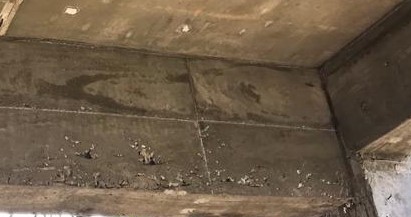Honeycomb repair is a work of art that must be carried out with great care and technical support. Let's discuss how to do this.
Lack of compaction, mortar leakage, reinforcement overload, etc. lead to concrete honeycombing . Most honeycombs are recognizable because they occur near the surface. However, in large structures there are changes that create voids that are not filled with concrete.
Depending on the size of the honeycomb, a distinction is made between small and large honeycombs.
Smaller honeycomb formations are difficult to repair with approved construction mortars.
The building compound may be mixed according to the manufacturer's instructions and, after applying the binder and anti-corrosive agent, applied to the area in accordance with the approved procedural instructions.
If the honeycombs are very small, applying a corrosion inhibitor may not be necessary.


All types of honeycomb repairs must be carried out with non-shrinking construction mortar that has a very small volume reduction.
If the size of the honeycomb increases, special attention should be paid when correcting it. In the correction process, the following steps can be followed.
Concrete Honeycomb Repair Procedures
- Loads on structural elements. If it is a pillar and several floors have been erected, depending on the size/depth of the honeycomb, vertical supports may be provided or the necessary precautions may be taken after consulting the structural engineer.
- First, the loose material must be removed and the concrete exposed. The extent of voids, if any, should be noted and sufficiently cleaned by manually removing loose material. All repairs must be done manually and the use of machines may result in the formation of cracks.
- Depending on the shape of the honeycomb formwork, an individual arrangement must be made.
- Construction mortar must be used for correction and the mixing proportions must correspond to the manufacturer's instructions. If the depth of the honeycomb is shallower, generally no aggregate is added. However, if the dimension is about 100 mm or more, an aggregate can be used. As normally happens, metal shavings can be used as an additive and in general the mixing suggestion is 1:1 . However, it must meet the manufacturer's specifications.
- As an additional precaution, an anti-corrosion agent can be applied to the reinforcements before repairs.
- Before concreting, an approved binder must be applied to the concrete surface. The deadline depends on the product specification.
- Sometimes honeycomb repair occurs in two stages if the depth is greater. There is a maximum thickness that can be applied at one time. If the subsoil supplier specifies two rectification steps, these must be respected.
- Curing must be carried out in accordance with the manufacturer's recommendations.


As shown in Figure 02, this honeycomb can be considered as the one that requires the most attention. Remediation must be carried out taking into account the points discussed above, as well as the following project specification.

